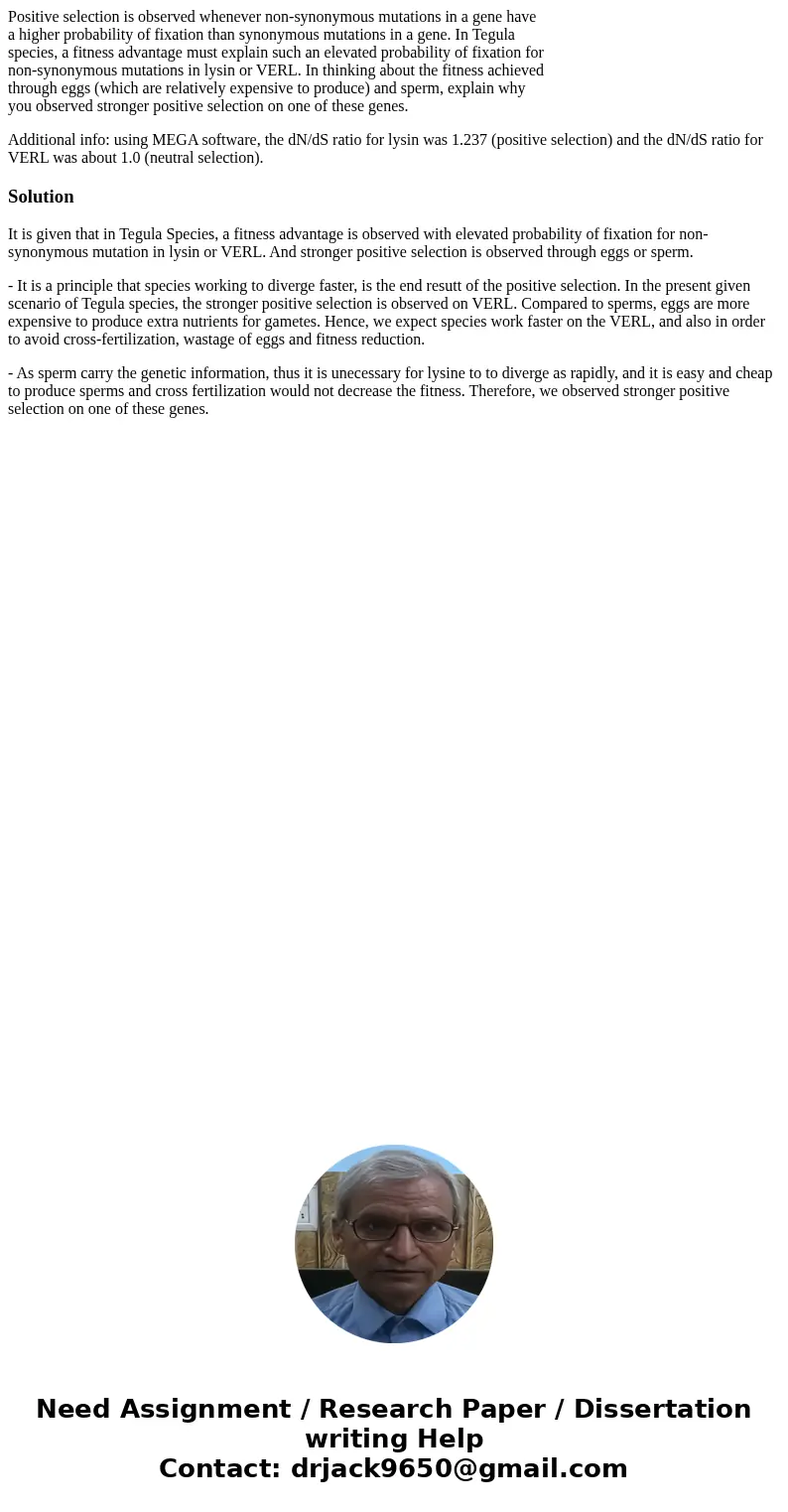Positive selection is observed whenever nonsynonymous mutati
Positive selection is observed whenever non-synonymous mutations in a gene have
a higher probability of fixation than synonymous mutations in a gene. In Tegula
species, a fitness advantage must explain such an elevated probability of fixation for
non-synonymous mutations in lysin or VERL. In thinking about the fitness achieved
through eggs (which are relatively expensive to produce) and sperm, explain why
you observed stronger positive selection on one of these genes.
Additional info: using MEGA software, the dN/dS ratio for lysin was 1.237 (positive selection) and the dN/dS ratio for VERL was about 1.0 (neutral selection).
Solution
It is given that in Tegula Species, a fitness advantage is observed with elevated probability of fixation for non-synonymous mutation in lysin or VERL. And stronger positive selection is observed through eggs or sperm.
- It is a principle that species working to diverge faster, is the end resutt of the positive selection. In the present given scenario of Tegula species, the stronger positive selection is observed on VERL. Compared to sperms, eggs are more expensive to produce extra nutrients for gametes. Hence, we expect species work faster on the VERL, and also in order to avoid cross-fertilization, wastage of eggs and fitness reduction.
- As sperm carry the genetic information, thus it is unecessary for lysine to to diverge as rapidly, and it is easy and cheap to produce sperms and cross fertilization would not decrease the fitness. Therefore, we observed stronger positive selection on one of these genes.

 Homework Sourse
Homework Sourse